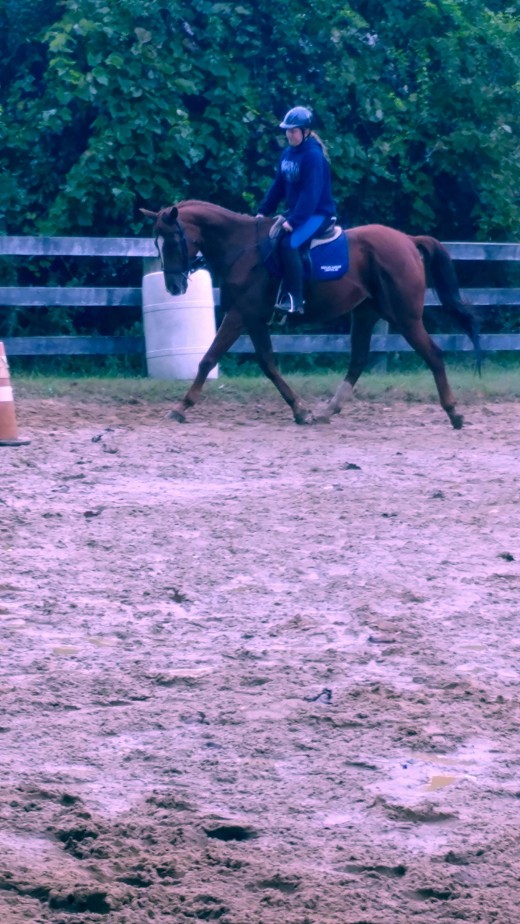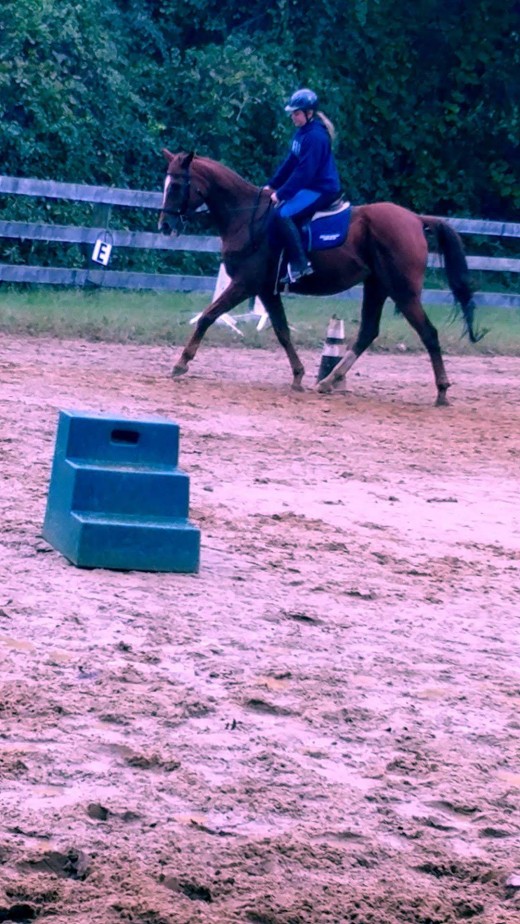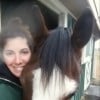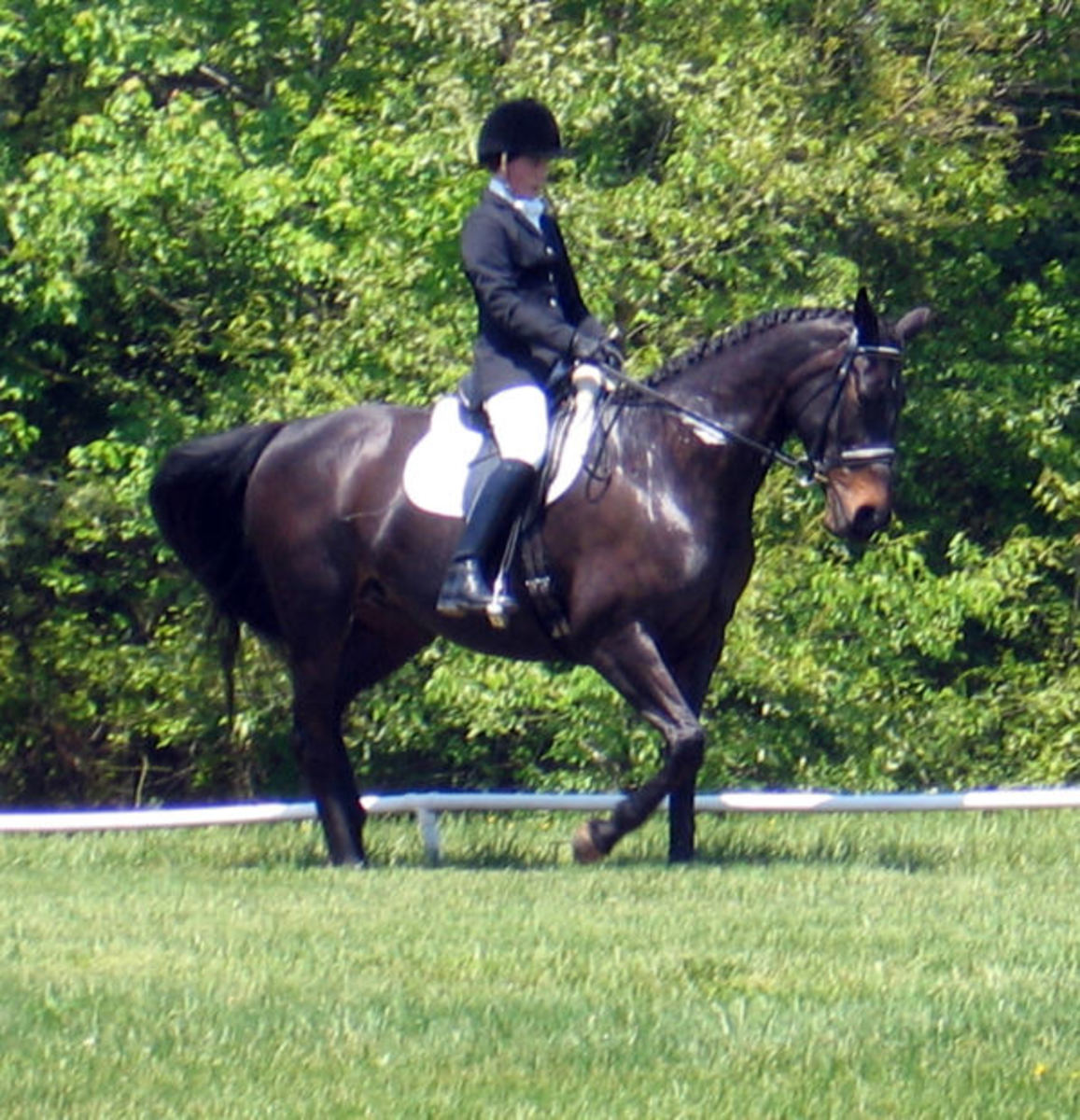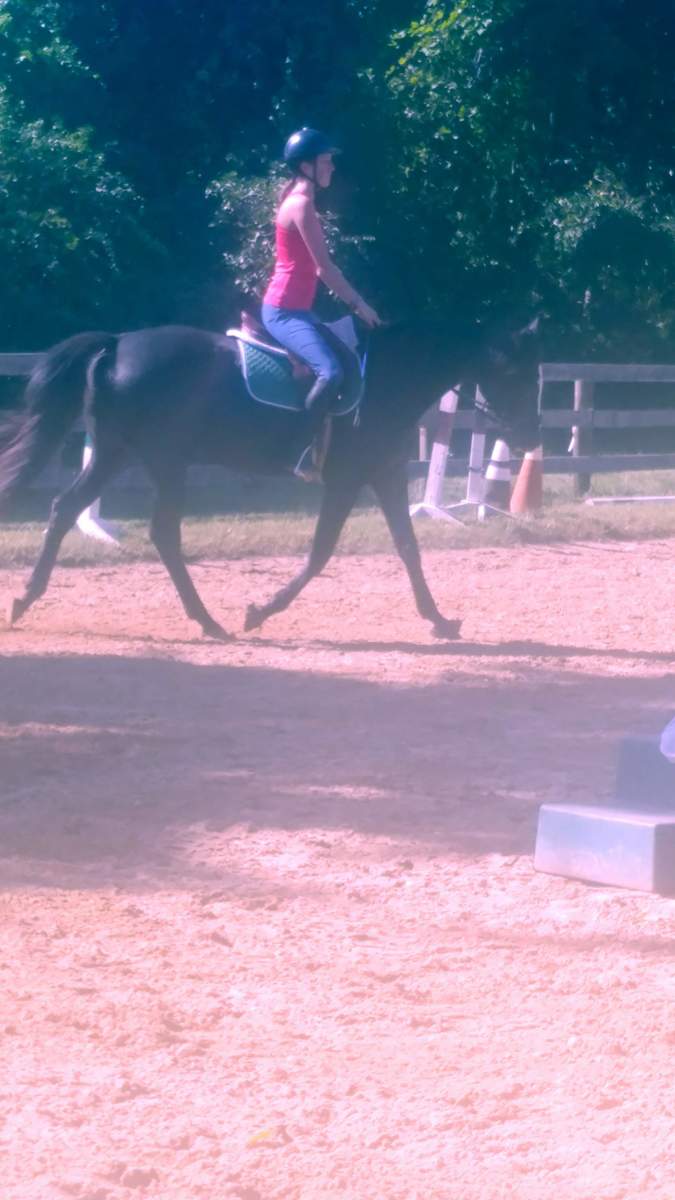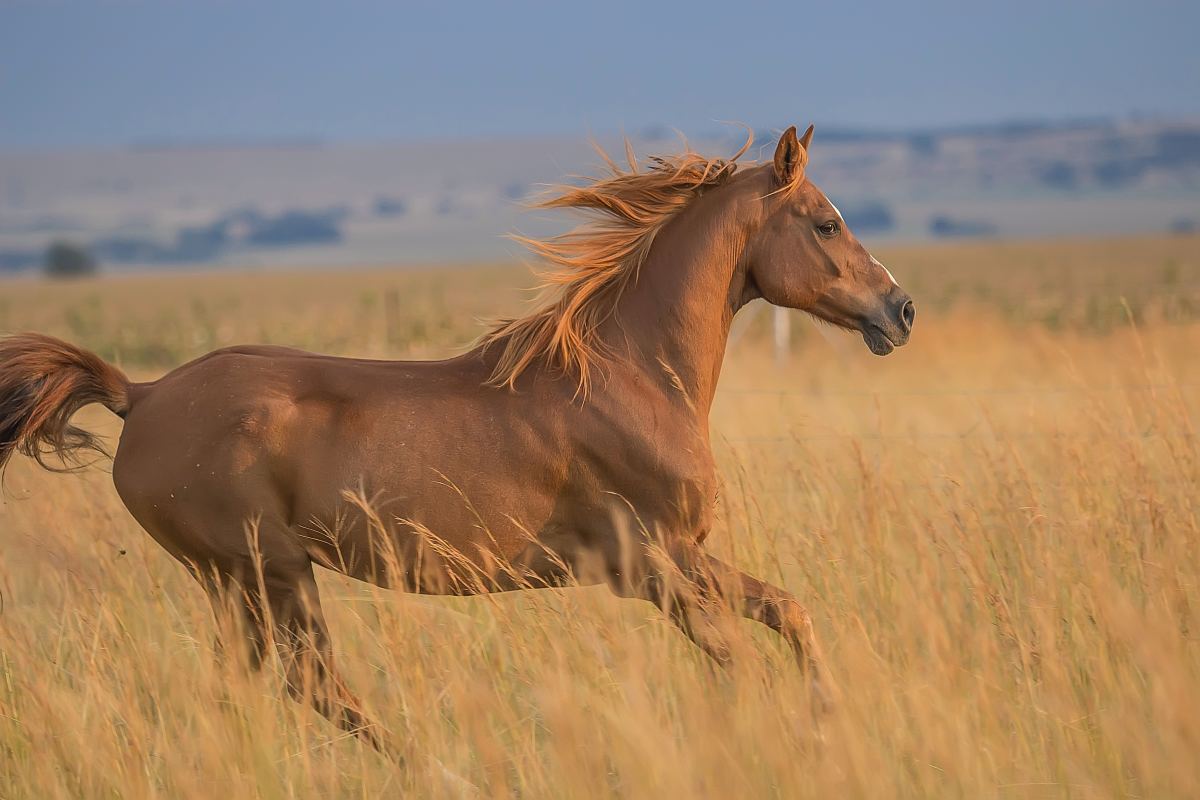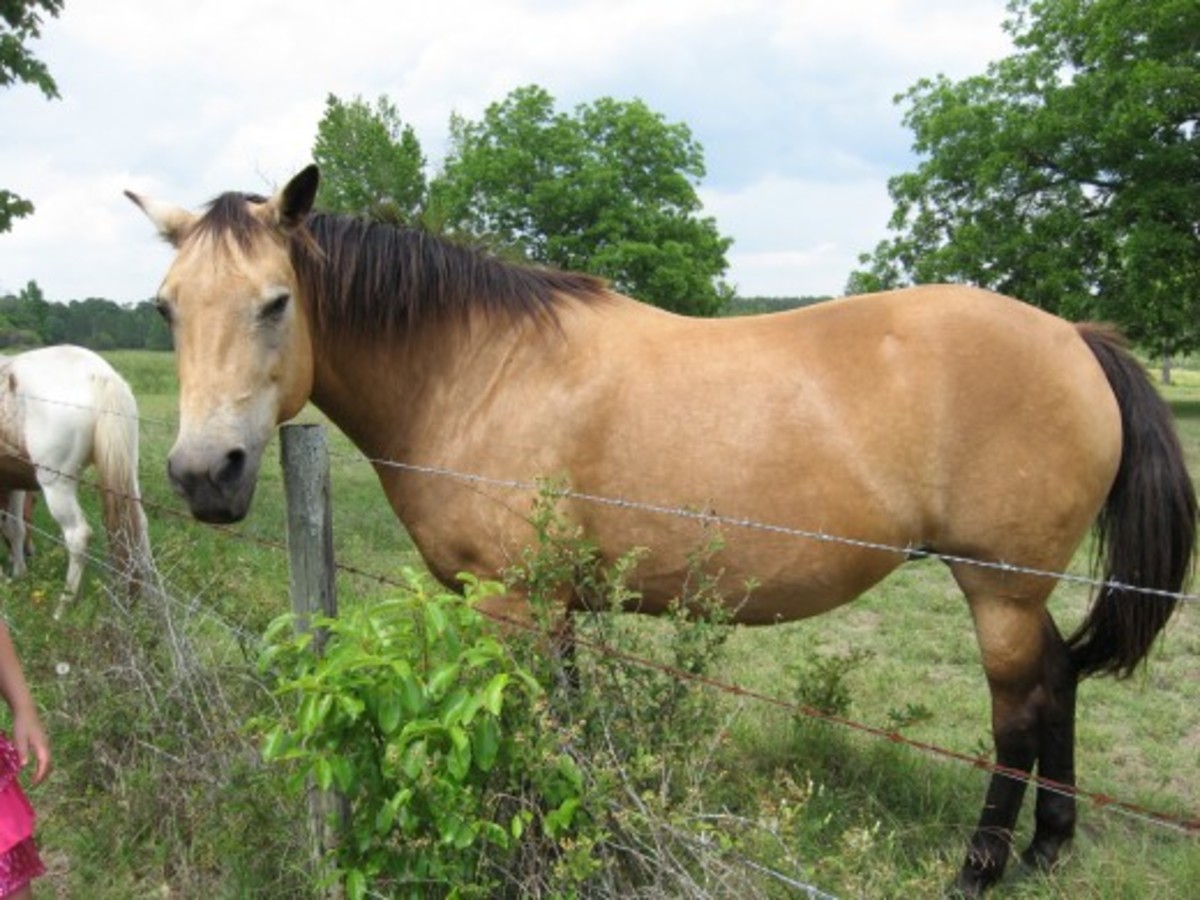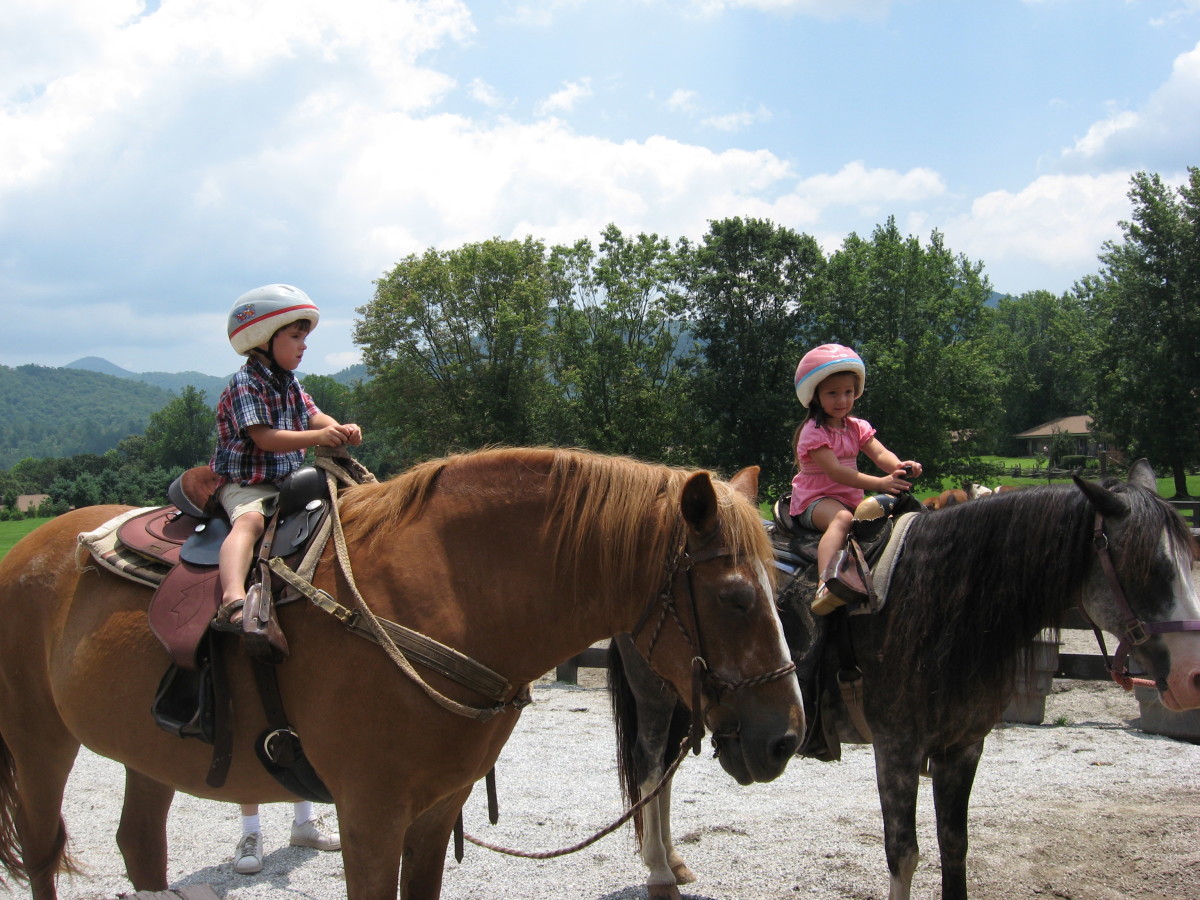There Is No Room for Ego in the Riding Arena
The Inspiration For This Post
I was inspired to write this after one of my lessons yesterday. One that ended with me feeling disappointed in my judgment. Horses only have so much of an attention span to give. They only have so much tolerance for trying to figure out what we want when we are teaching them new skills. Part of our jobs as trainers and riders is not only knowing when to push but also when to call it a day.
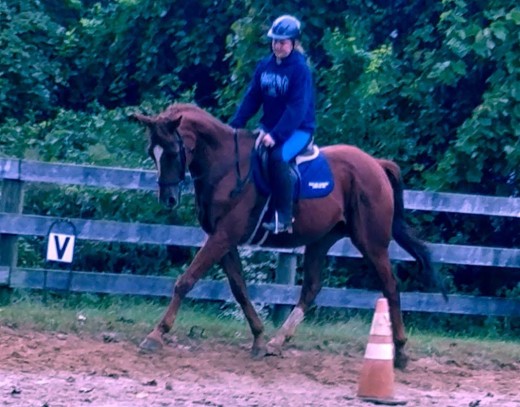
Should Have Ended On A Good Note
This particular lesson was going very well, it was an hour long lesson and we were about at the halfway point. My student was a confident teenage rider on one of our more advanced lesson horses. She is learning how to put a horse on the bit and this was only her second lesson working on it.
The horse knows how to go in a frame, though he is not expected to very often, but when asked correctly he will.
I was thrilled for the first half of the lesson with how my student was picking up the feel and timing of asking the horse to stay on the bit. She was finally understanding that the pushing forward is first and foremost. They were both relaxed and had walked, trotted and cantered both ways.
So What Now?
We had warmed up nicely on the flat, so now what should we do? That's the question I was asking myself. Since the trotting in a frame seemed to happen fairly easily, I decided that we would work on cantering in a frame.
Looking back at the lesson, I made the wrong choice. At the halfway point, or a little more than halfway point, both horse and rider were focused and relaxed. On one hand, I thought they were both in a good frame of mind to take the next step and work on it at the canter.
In retrospect, what I should have done was set up some little jumps and let them practice popping over them. Something to keep the horse interested and wanting to move forward. Remember, there is a big difference in a horse that wants to move forward and one that you have to push with every stride. We should have worked on small jumps at the trot, trying to keep reinforcing that nice frame and rhythm in between the jumps. If he picked up a canter after a jump we should have just let him canter on in whatever frame he happened to be in a few strides and then gently brought him back to trot.
If that is what I had done, the lesson would have been great. They did a beautiful warm up on the flat and then popped over a few jumps. So they were reinforcing what we were working on last week, as well as adding something new(which would have been the jumps). They would have stayed relaxed, and both had fun. The horse would have been interested in the jumps and engaged in his work. Instead, I made the wrong call, and he got tense and resistant.
What Happened?
When she started asking him to go into a frame at the canter, at first he just ignore her. She is still learning and so she was doing her best to ask him correctly, but the horse was getting flustered. He felt like her legs were saying go and her hands were saying stop.
Though this horse is trained in dressage and does, in theory, know he needs to move forward into a soft steady contact, with a rider who was unsure of the cues, it made him tense.
Tense wouldn't have been so bad if I would have recognized it and diffused the situation before it got any worse. When I realized that they were struggling to communicate, I should have had her come back to trot, correct her hand position and find a steady trot rhythm before picking up canter again.
By the time I realized that they were not on the same wavelength the horse was past tense to the point of resistant. He was tight in his back, had the bit clenched in his teeth and was resisting the rider's leg. I could actually see him pushing his rib cage back against her leg when she put her leg on. When she used the crop he pinned his ears and slowed down even more. He even tried to leave the arena through the open gate one time.
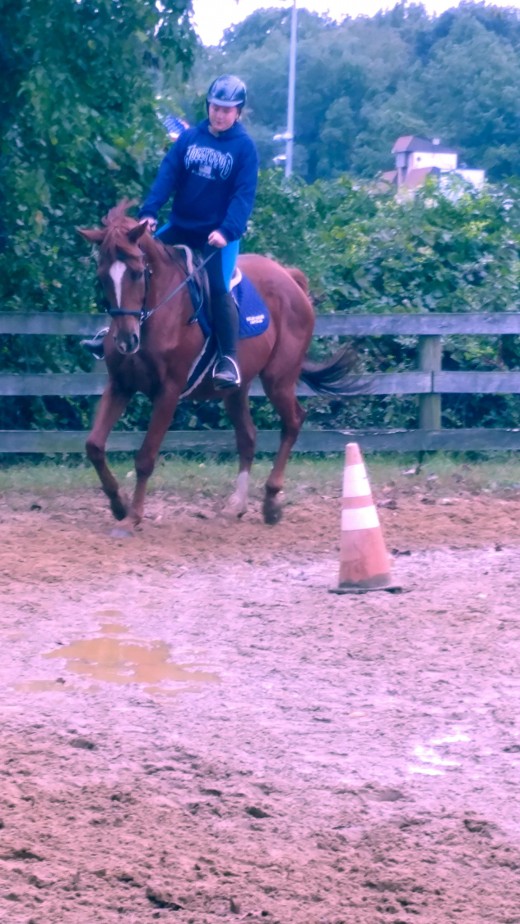
How Do We Fix It?
The first thing that we had to do to fix it was just to stop and take a deep breath. All three of us, me, the student and the horse!
I told my student that I had read the horse wrong and that we needed to start over and find a good stopping point.
I had her go back out and pick up a trot on a soft contact and just work on pushing him forward off her leg and not letting his shoulder pop out. Keeping him shaped properly on the circle. Making sure her hand position was encouraging him to trust her hand, not resist it, and making sure that she was centered and straight to encourage the horse to do the same.
We had to completely take a step back. Well, two steps actually, we went back to trot from the canter. Then we stopped working on asking him to go in a frame and just asked him to be in front of the leg(moving forward) and staying nice and straight, making sure his shoulder didn't pop out or that he didn't get crooked.
We Broke Things Down And Went Back To Basics
Things weren't going well. I misjudged the horse's attention span for the lesson and pushed the rider to move on to a harder skill when she was probably only about 75 % solid on the skill before that. It was my fault, so we had to go back to basics and break things down to what we knew that they could do well. To boost their confidence back up also to help the correct feeling of the rider position, as well as the horse carrying its self properly, to become second nature, and create muscle memory.
When we did that, within about fifteen minutes we were back to the nice relaxed and forward trot that we had in the beginning. We ended on a good note. As we ended on a good note I made sure that my rider understood how I had misjudged the situation, that way she understood where all that tension and resistance suddenly came from.
We discussed how we went back to basics, and how they had that lightbulb moment again at the end where they clicked and were back to communicating on the same wavelength again. It was a hard lesson, she learned from it, and ended on a good note. When she left the arena there was not a hint of tension or resistance in either horse or rider.
So Whats My Point Then?
My point is that we all have bad days and make mistakes. Even us trainers and instructors still sometimes don't get things quite right. As long as you admit it and regroup, figure out how to go back to basics. Then end on a good note, you will all learn from your mistakes. I know I learned from my mistakes yesterday.
I hope my student learned from my mistakes. I hope she learned that sometimes even us experienced horse people get it wrong and that you have to stay humble and admit when you made a mistake.
It's better to be humble, and do the right there by your horse, by going back to basics and ending on something you know you can do well.
If you make a mistake, set your ego aside, admit it and go back to basics and help your horse understand what you want. Get back on the same wavelength as them. You will be glad you did, and you will start out on a better note the next time you get on.
